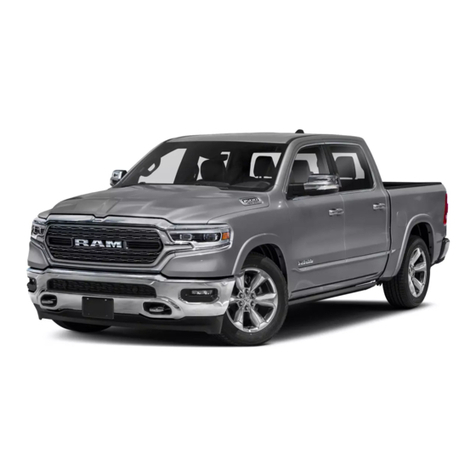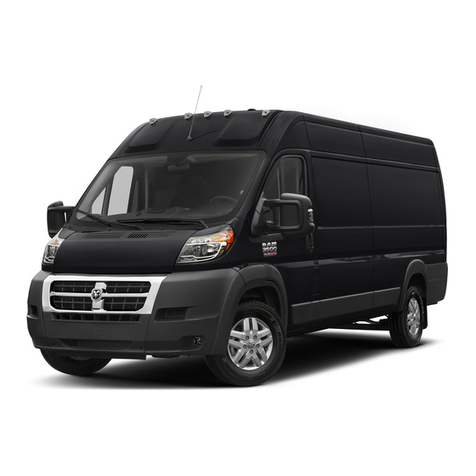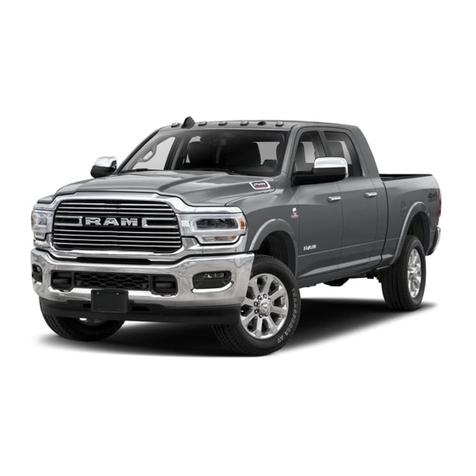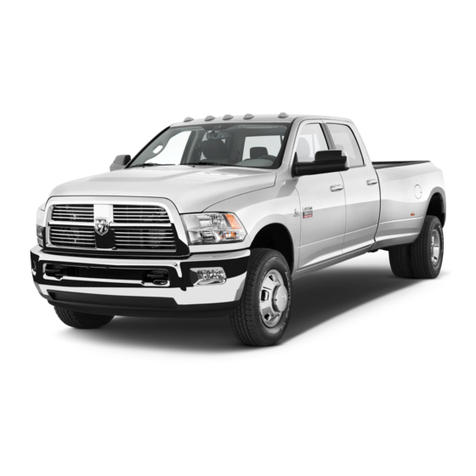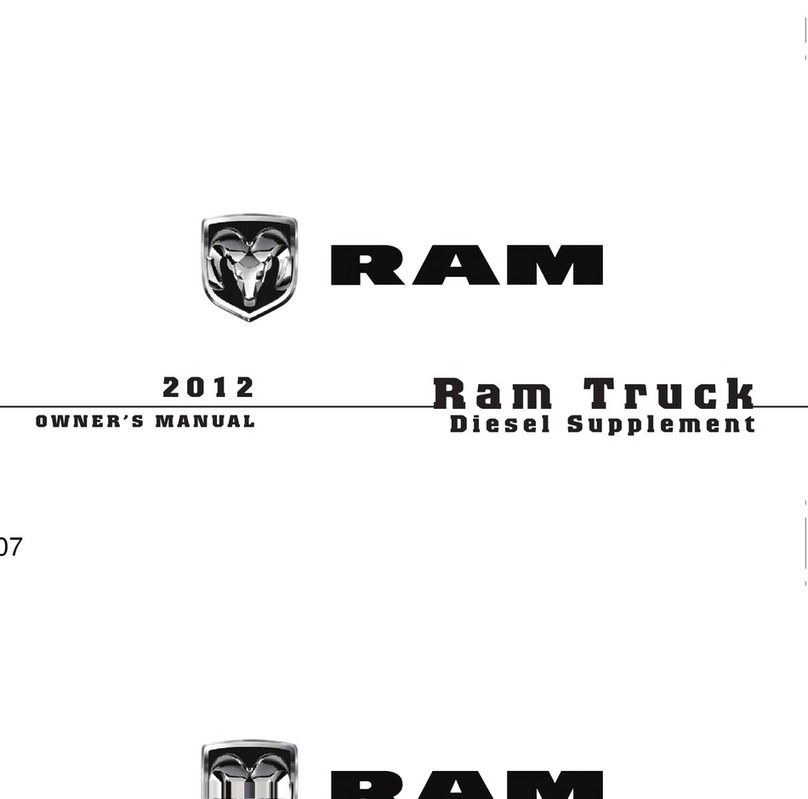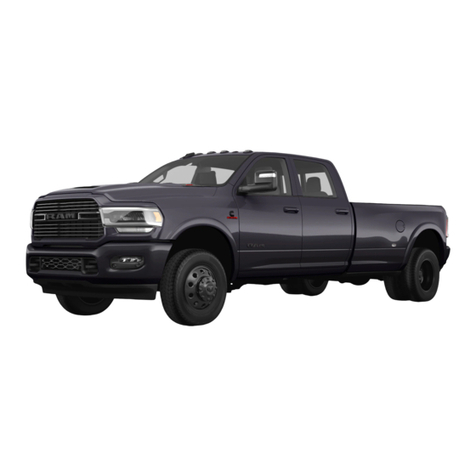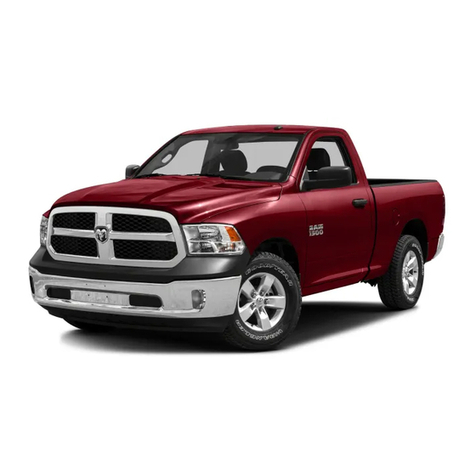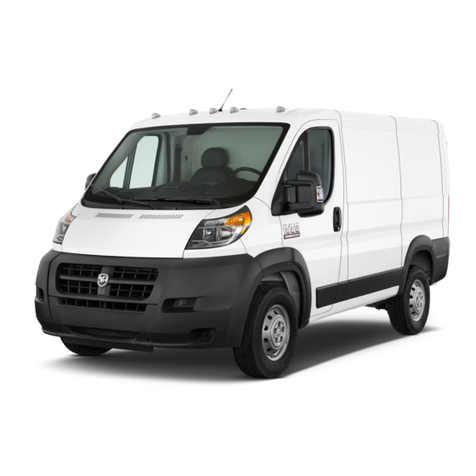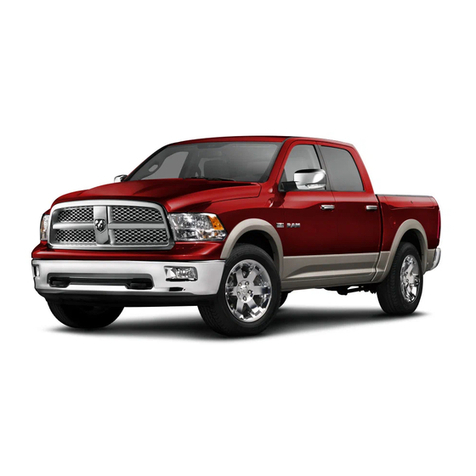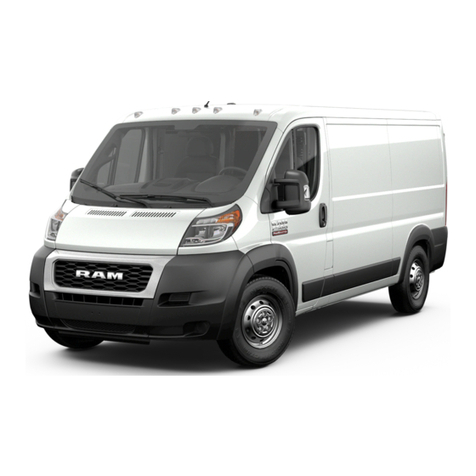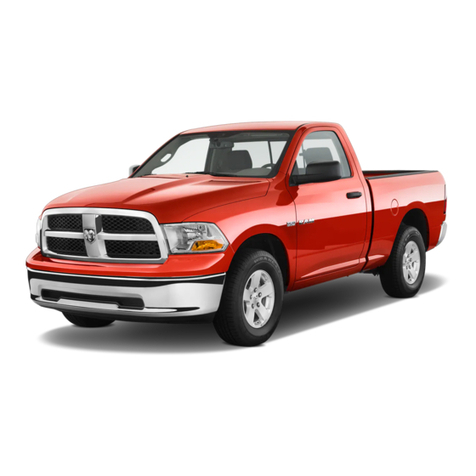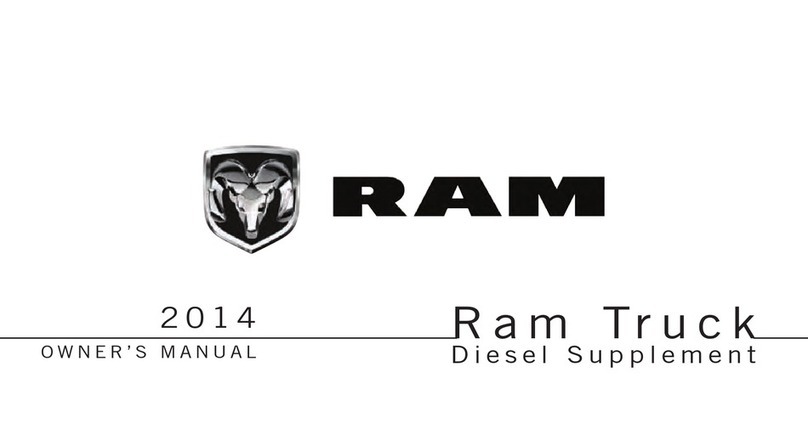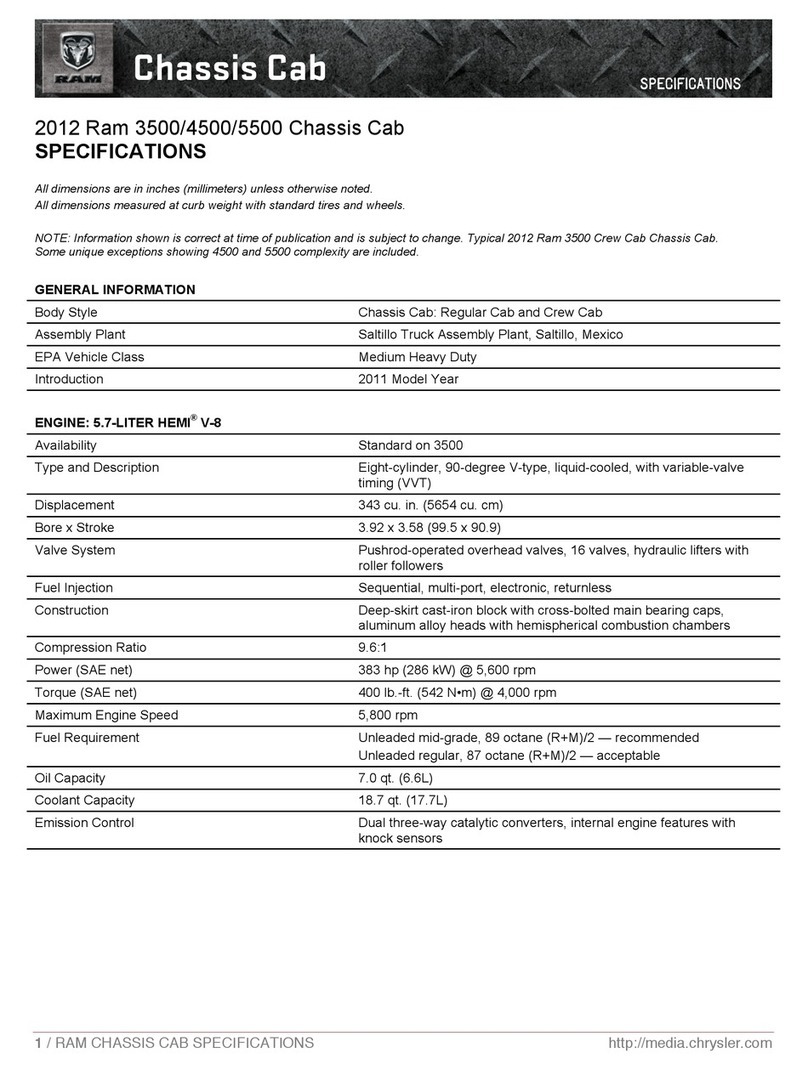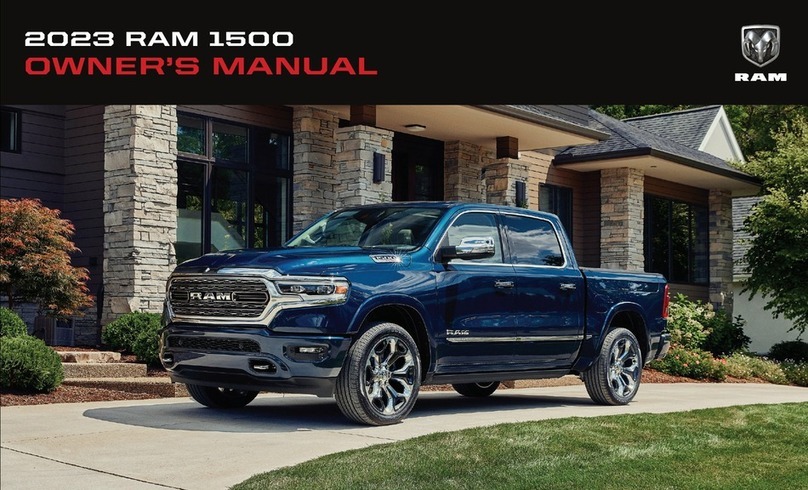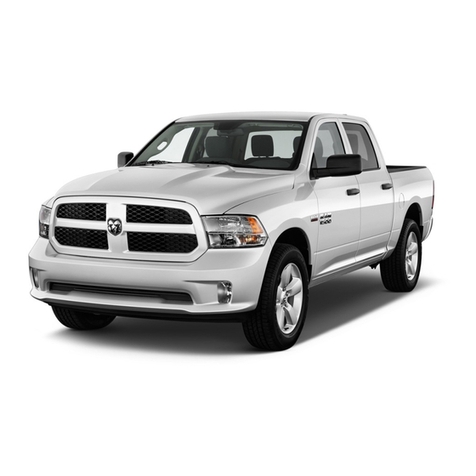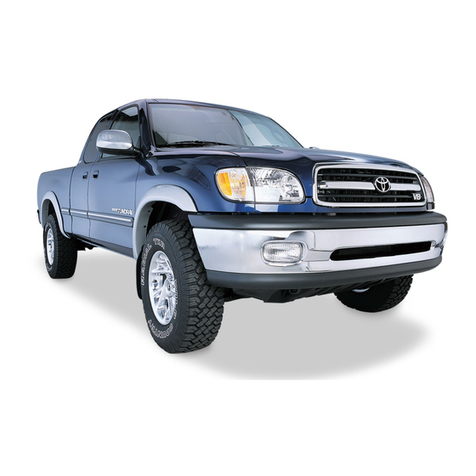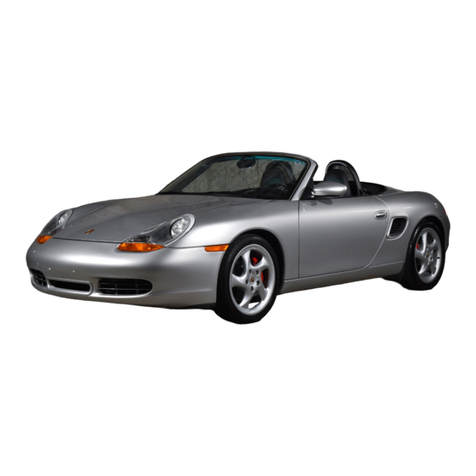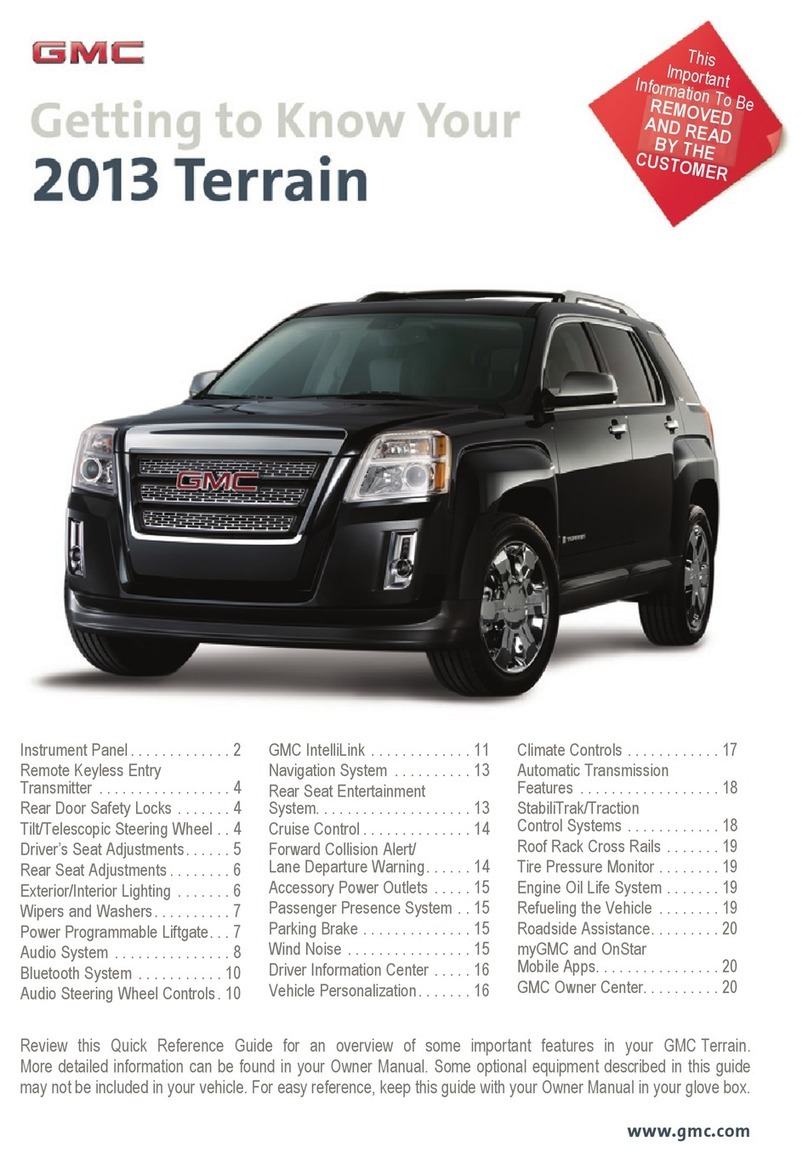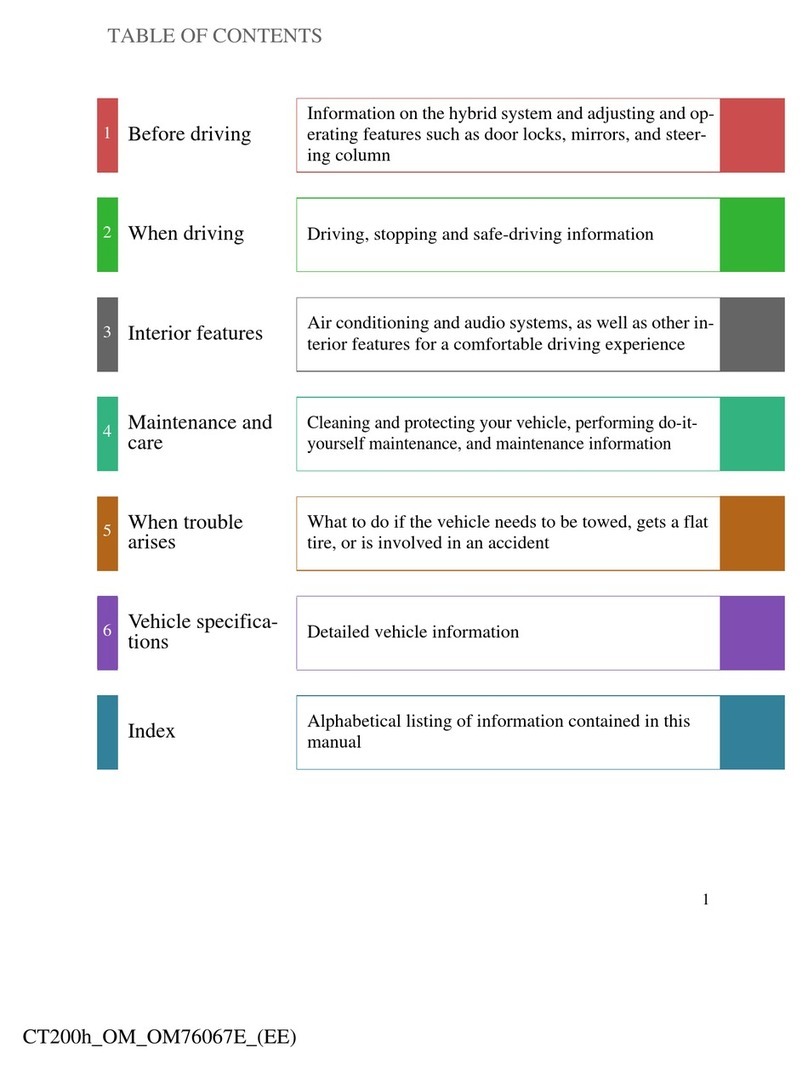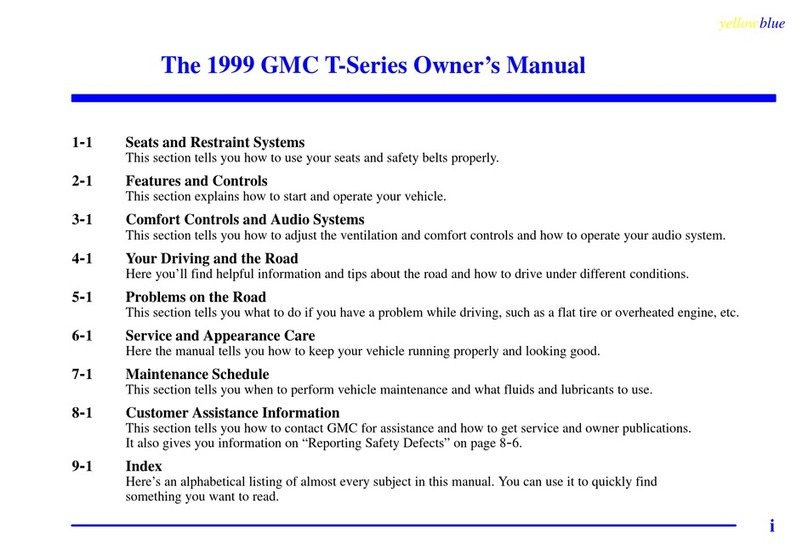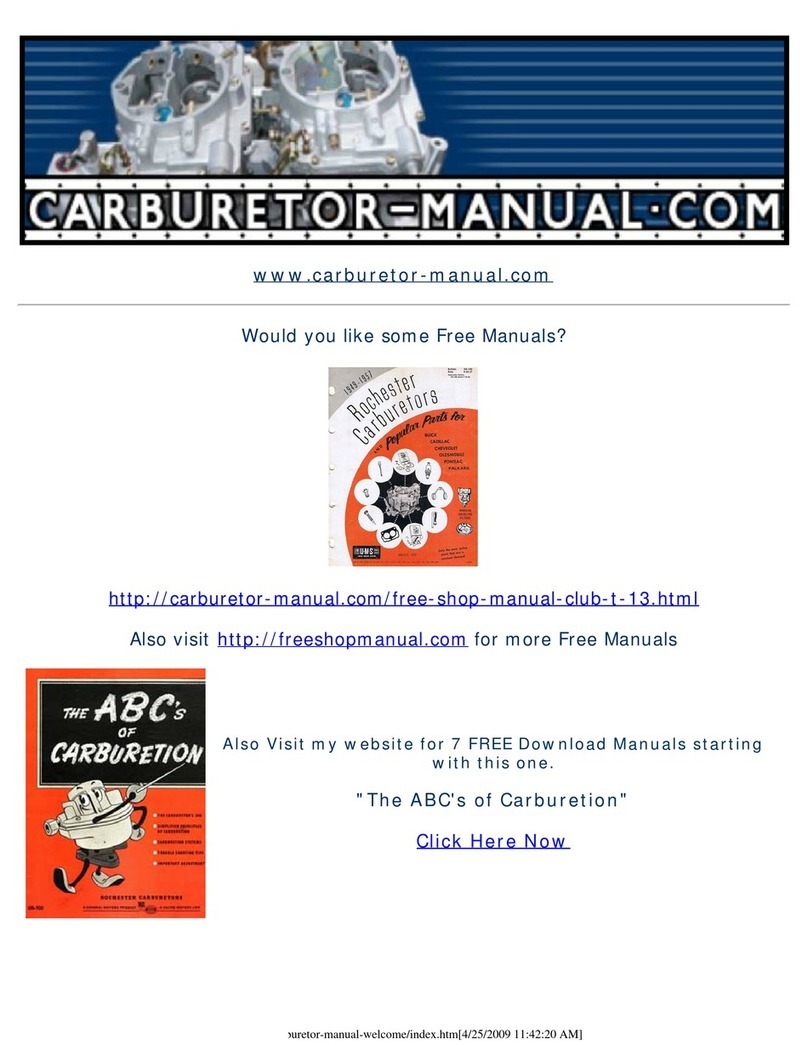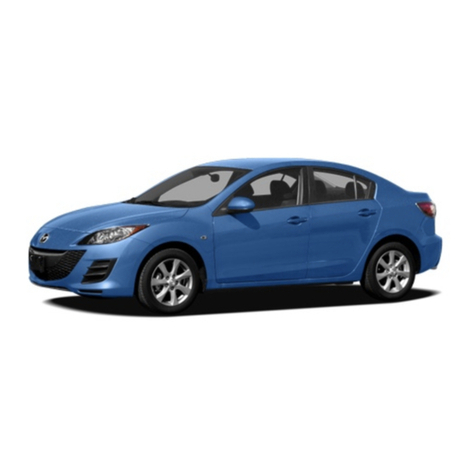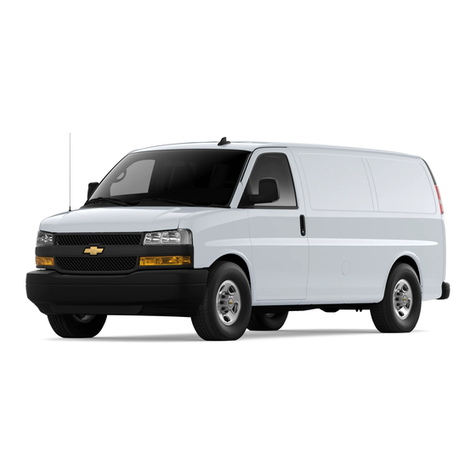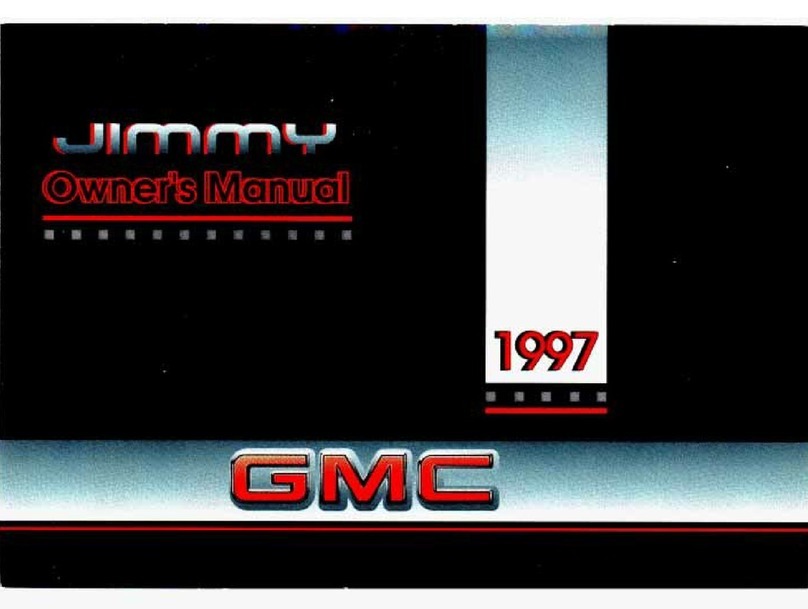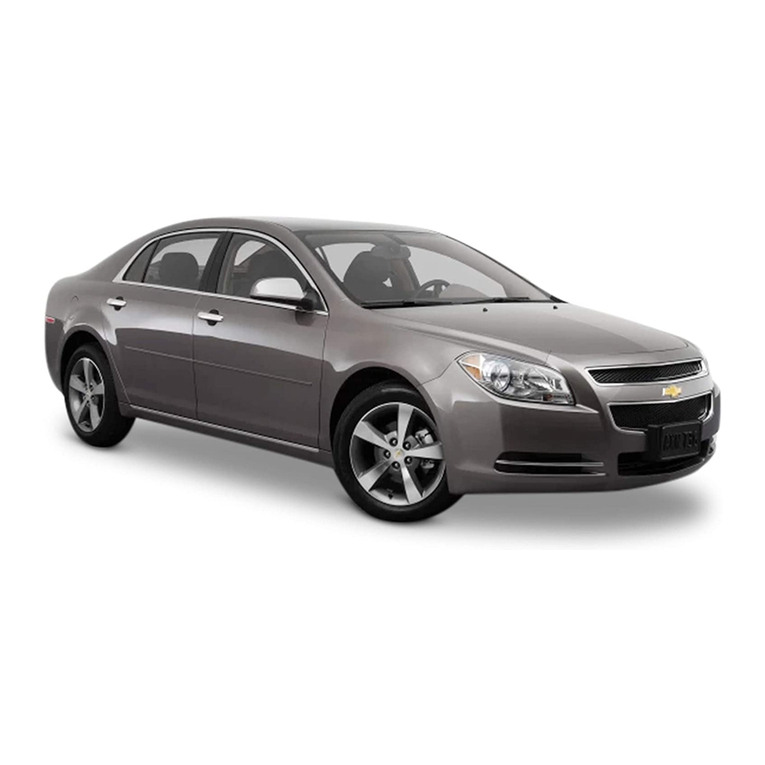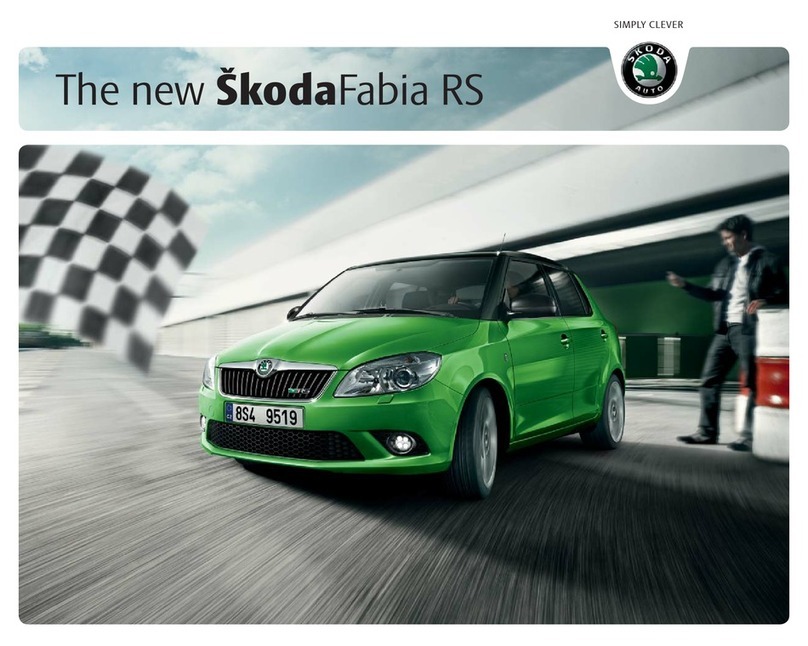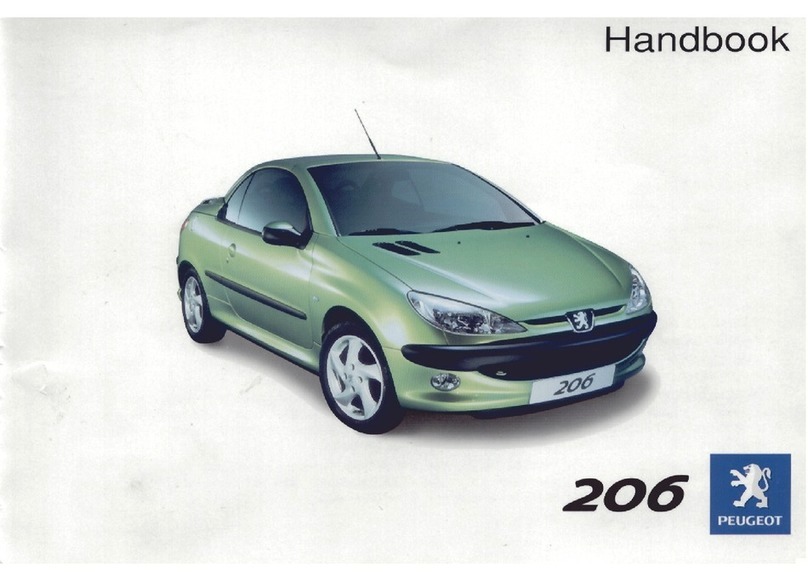
INTRODUCTION/WELCOME
WELCOME FROM CHRYSLER
GROUP LLC ..................3
CONTROLS AT A GLANCE
DRIVER COCKPIT ...............6
INSTRUMENT CLUSTER ..........8
GETTING STARTED
KEYFOB ...................10
REMOTE START ..............11
THEFT ALARM ...............12
SEATBELT ..................12
SUPPLEMENTAL RESTRAINT
SYSTEM (SRS) — AIR BAGS .......13
CHILD RESTRAINTS ............14
FRONT SEATS ................16
REAR SEATS .................17
HEATEDSEATS ...............21
HEATED STEERING WHEEL .......22
TILT/TELESCOPING STEERING
COLUMN ...................23
ADJUSTABLE PEDALS ...........23
OPERATING YOUR VEHICLE
ENGINE BREAK-IN
RECOMMENDATIONS ...........24
TURN SIGNAL/WIPER/WASHER/HIGH
BEAM LEVER ................24
HEADLIGHT SWITCH AND HALO
LIGHTSWITCH ...............26
SPEED CONTROL ..............27
ELECTRONIC RANGE SELECTION
(ERS) .....................28
FUEL ECONOMY (ECON) MODE .....28
MANUAL CLIMATE CONTROLS ......29
THREE ZONE MANUAL CLIMATE
CONTROLS ..................30
THREE ZONE AUTOMATIC
TEMPERATURE CONTROLS (ATC) ....32
PARKSENSE
®
REAR PARK ASSIST
....34
PARKVIEW
®
REAR BACK-UP CAMERA
..34
BLIND SPOT MONITORING WITH
REAR CROSS PATH .............34
POWER SLIDING SIDE DOORS ......35
POWER LIFTGATE ..............35
POWER SUNROOF .............36
WIND BUFFETING .............37
ELECTRONICS
YOUR VEHICLE'S SOUND SYSTEM . . . 38
Uconnect
®
130 ...............40
Uconnect
®
130 WITH SiriusXM
SATELLITE RADIO ..............42
Uconnect
®
430/430N ...........45
Uconnect
®
730N ..............54
SiriusXM SATELLITE RADIO/TRAVEL
LINK ......................64
STEERING WHEEL AUDIO CONTROLS
..68
iPod
®
/USB/MP3 CONTROL ........68
Uconnect
®
Phone ..............69
Uconnect
®
VOICE COMMAND .......73
Bluetooth
®
STREAMING AUDIO .....75
VIDEO ENTERTAINMENT
SYSTEM (VES™) ..............76
ELECTRONIC VEHICLE
INFORMATION CENTER (EVIC) ......77
PROGRAMMABLE FEATURES .......78
UNIVERSAL GARAGE DOOR OPENER
(HomeLink
®
) .................80
POWER INVERTER .............83
POWER OUTLETS .............84
UTILITY
RAM CARGO VAN FEATURES ......86
IN-FLOOR STORAGE – STOW'N GO
®
...88
ROOF LUGGAGE RACK ..........89
TRAILER TOWING WEIGHTS
(MAXIMUM TRAILER WEIGHT
RATINGS) ..................90
RECREATIONAL TOWING
(BEHIND MOTORHOME, ETC.) .....90
WHAT TO DO IN EMERGENCIES
ROADSIDE ASSISTANCE ..........91
INSTRUMENT CLUSTER WARNING
LIGHTS ....................91
IF YOUR ENGINE OVERHEATS ......95
JACKING AND TIRE CHANGING .....96
JUMP-STARTING .............106
SHIFT LEVER OVERRIDE ........108
TOWING A DISABLED VEHICLE ....109
FREEING A STUCK VEHICLE ......110
EVENT DATA RECORDER (EDR) ....111
MAINTAINING YOUR VEHICLE
OPENING THE HOOD ..........112
ADDING FUEL ...............113
ENGINE COMPARTMENT ........114
FLUIDS AND CAPACITIES ........115
MAINTENANCE SCHEDULE ......116
MAINTENANCE RECORD ........120
FUSES ....................121
TIRE PRESSURES .............125
WHEEL AND WHEEL TRIM CARE . . . 126
EXTERIOR BULBS ............126
TABLE OF CONTENTS
